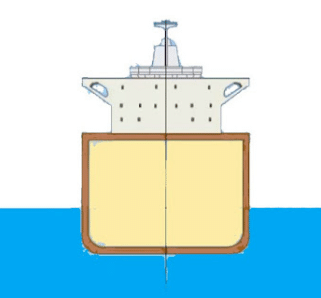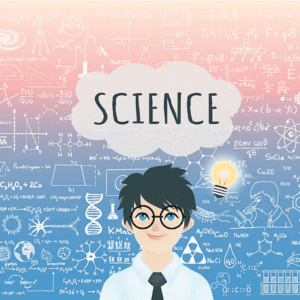Floatation | General Awareness for SSC CGL PDF Download
| Table of contents |

|
| Introduction |

|
| Principle of Floatation |

|
| Conditions for Floatation |

|
| Relationship Between Real Weight and Upthrust |

|
Introduction

Floatation refers to the ability of an object to stay on the surface or in the upper layers of a liquid, such as water or any other liquid.
In the illustrated example, floatation and sinking are shown. The object that floats remains in the upper layers of the liquid, while the object that sinks is at the lowest levels of the fluid.
Principle of Floatation
The principle of floatation, articulated by the ancient Greek scientist Archimedes, states that any object submerged in a liquid experiences an upward force, known as buoyancy. This buoyant force allows an object to float if it displaces an amount of liquid equal to its own weight. The density of an object plays a crucial role in floatation; an object will float if its density is lower than the liquid's density. For instance, a leaf floats on water due to its lower density, whereas a stone sinks because it is denser than water.
Three Laws of Floatation
The laws governing floatation derive from Archimedes’ Principle. They state:
- An object will float in a liquid if its density is less than or equal to the liquid's density.
- If the density of the object equals the density of the liquid, it will float fully submerged in a state of neutral equilibrium.
- In neutral equilibrium, the weight of the object is equal to the weight of the displaced liquid.
- The center of gravity of the object and the center of gravity of the displaced liquid should align vertically.
Conditions for Floatation
For an object to float, it must meet these conditions:
- The object's average density should be less than the fluid's average density.
- The submerged volume of the object should be sufficient to displace a significant amount of fluid.
- The upthrust exerted by the liquid should exceed the object's total weight.
 |
Download the notes
Floatation
|
Download as PDF |
Relationship Between Real Weight and Upthrust
When pushing an object through water, you encounter resistance due to the buoyant force, or upthrust, which acts upward. This buoyant force makes submerged objects feel lighter. The upthrust increases with the volume of the submerged body and the fluid's density. The center of buoyancy is where the upthrust acts in an upward direction on the body. The relationship between an object's real weight and upthrust shows that they are equal, meaning the floating body displaces its own weight in the fluid.
Examples
- Hot Air Balloon: A hot air balloon floats because the hot air inside is less dense than the surrounding cold air, creating an upthrust that allows it to stay afloat. The balloon displaces an amount of air equal to its own weight.
- Ships: Ships displace an amount of water equal to their weight, allowing them to float. Although ships are made of dense materials like iron, they are designed to be hollow, reducing their average density and increasing their volume, which helps them displace a large amount of water.
Applications of the Law of Floatation
The principles of floatation are applied in various real-life scenarios:
- Submarines: Ballast tanks in submarines are filled with air to bring the submarine to the surface.
- Decorative Balloons: Filled with lighter gases to keep them afloat in the air.
- Airships: Filled with lighter gases like helium to stay aloft.
- Humans: Can float in water as long as they don't ingest water into their lungs.
|
470 videos|1042 docs|394 tests
|
FAQs on Floatation - General Awareness for SSC CGL
| 1. What is the principle of floatation? |  |
| 2. What are the conditions for floatation to occur? |  |
| 3. How is the relationship between real weight and upthrust related to floatation? |  |
| 4. How does floatation apply to objects of different densities? |  |
| 5. How can the principle of floatation be applied in real-life situations? |  |
























